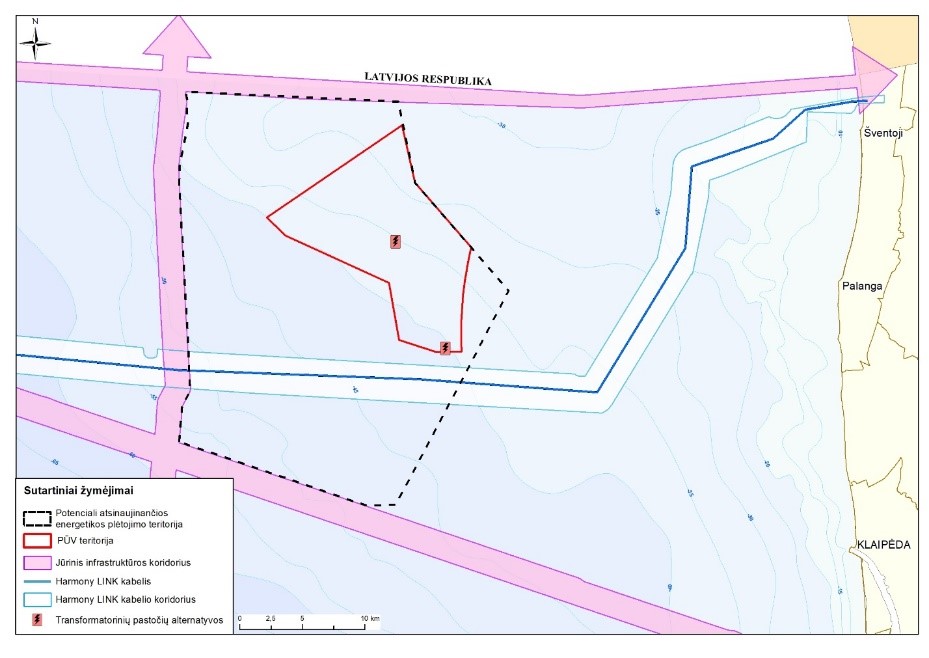Environmental protection
- ENVIRONMENTAL IMPACT ASSESSMENT (second TENDER)
The Resolution of the Government of the Republic of Lithuania on Approval of the Description of the Requirements for Persons Who Seek to Acquire or Have Acquired the Right to Develop and Operate Power Plants Using Renewable Energy Sources in the Territorial Waters, and of Reimbursement for the Costs of Conducting Marine Surveys and Other Actions obligates the winner of the tender to additionally allocate an amount of at least EUR 5 million to be used according to the procedure established by the Government, for the purposes of environmental protection in the territorial waters. The winner of the tender will have to transfer the specified amount to a separate state budget account, which will be announced on the website of the Ministry of Energy, within 20 working days from the date of issue of the first construction permit.
Environmental impact assessment
The Resolution 2020 of the Government of the Republic of Lithuania on Establishing the Parts of the Territorial Sea of the Republic of Lithuania and/or the Exclusive Economic Zone of the Republic of Lithuania in the Baltic Sea where Organising a Tender/Tenders for the Development and Operation of Power Plants Using Renewable Energy Sources is Expedient, as well as the Installed Capacities of these Power Plants, it is mandatory to prepare an environmental impact assessment (EIA) programme for the proposed economic activity (PEA), perform EIA procedures, and prepare an EIA report in accordance with the Republic of Lithuania Law on Environmental Impact Assessment of Proposed Economic Activity.
- Environmental impact assessment report on offshore wind farms (only in Lithuanian)
- Environmental protection agency decision on the environmental impact of the installation and operation of the offshore wind farm in Lithuania‘s marine territory
- To identify, describe and evaluate the possible direct and indirect impact of the proposed economic activity (PEA) on the following environmental elements: the surface of the earth and its depths, air, water, landscape and biological diversity, paying particular attention to species and natural habitats of importance to the European Community, as well as other species protected under the Republic of Lithuania Law on the Protected Species of Fauna, Flora and Fungi, material values, immovable cultural properties, and the mutual interaction of these element;
- To identify, describe and evaluate the possible direct and indirect impact of the biological, chemical and physical factors caused by the PEA on public health, as well as on the interaction between environmental elements and public health;
- To identify the possible impact of the PEA on environmental elements and public health due to the risk of vulnerability of the proposed economic activity in terms of extreme events and/or potential emergency situations;
- To establish the measures that are planned to be taken in order to avoid any foreseen significant negative impact on the environment and public health, to mitigate it or, if possible, to compensate for it;
- To determine whether, after assessing its nature, location and/or impact on the environment and public health, the PEA meets the requirements of environmental protection, public health, protection of immovable cultural heritage, fire safety and civil safety legislation.

